By Soren Schamberg
As I progressed from coaching many recreational league teams, to multiple travel teams and watching and discussing Academy teams, one challenge that continually presents itself is getting players to understand what part of the field I am referring to during practice or a half time talk.
Orientation for the players is key and helping them understand where on the field you want them to be, or paying attention to is difficult if the coach, the player and the team are not working from the same "song sheet" as it were.
Knowing what I know now, and what is helpful as a player progresses as they age, establishing an understanding in players the 18 zone system is important and makes future discussions about areas of the field easier and more productive.
Before discussing the basics, it is also important to know that there is also another zonal system, a 20 zone system, being made popular by high level teams such as Manchester City, that is considered advanced to the 18 zone system. However, the 18 zone system has advantages at the lower levels of play because it is a simpler system to break down and to "see" on a field for younger or inexperienced players and a lot of what coaching is about, having a sound base that everyone understands is key.
In its simplicity, it is made effective to communicate during practices and games where you need players to be.
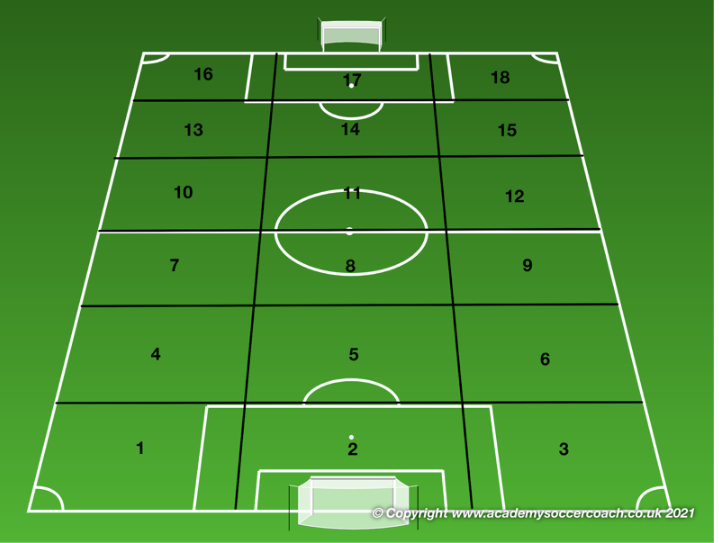
The 18 zones break down the field of play, from the defensive half starting on the left side and moving across to the right side of the field as zone 1, 2 & 3. Just above them is 4, 5 & 6, and then 7, 8, & 9. So, the defensive half of the field are 9 zones, moving left to right.
In the offensive half, you start at the left side again with 10, 11, & 12 moving to the right, then 13, 14, & 15, ending with 16, 17 & 18 to complete all 18 zones.
Laying the field out in this manner also creates the 3 fields of play as the defensive third, midfield, and offensive third horizontally moving up the field and along with the left, center and right side of the field vertically.
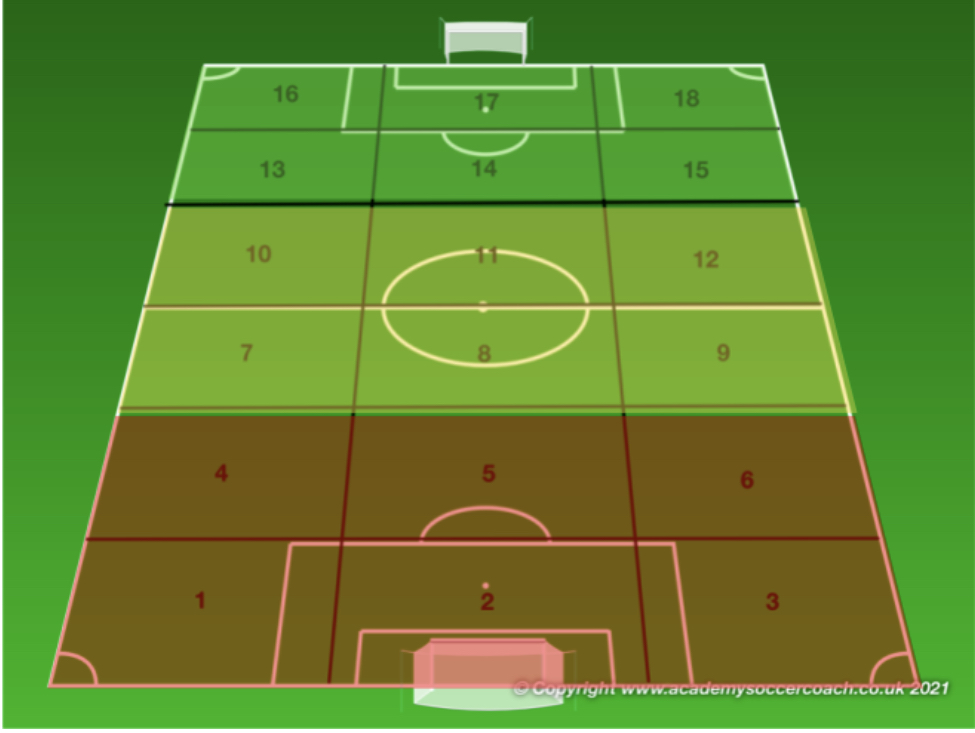
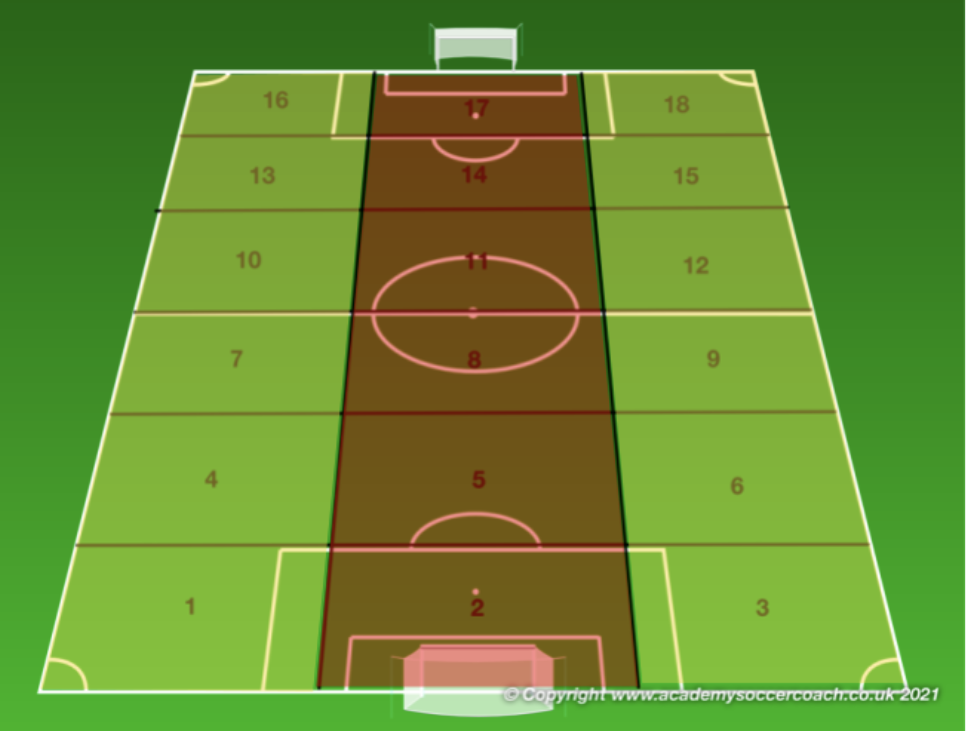
Teaching and discussing this layout with your team at any level will present everyone with familiarity of where on the field you are instructing them.
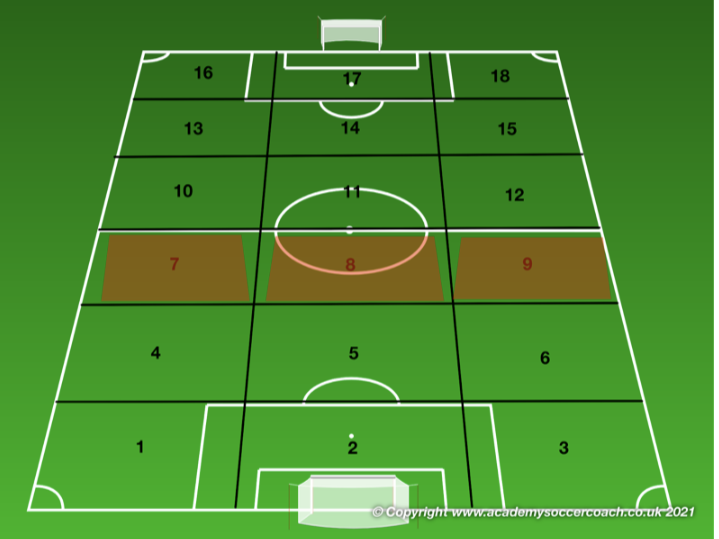
For example, if you are seeing your defense staying too far back when your team is attacking, you can instruct them that you want them in zones 7, 8 & 9 to move them up to the half way line.
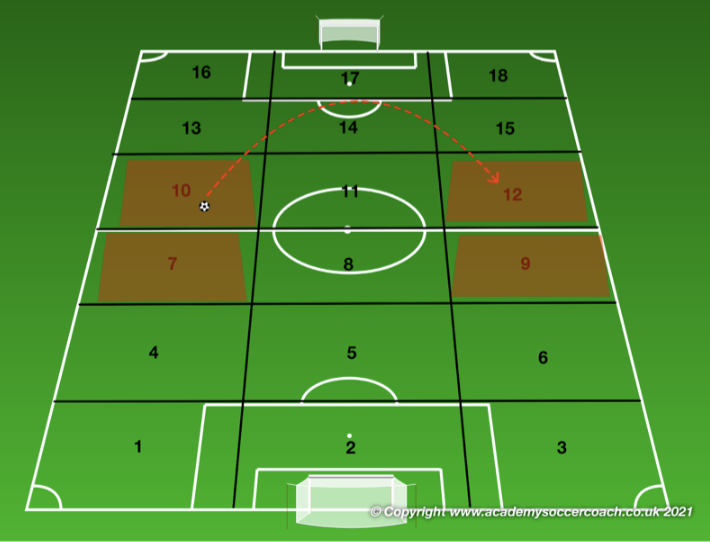
If you want the team to switch the field of play in midfield from left to right, you can tell the players when they are in 7 & 10 to look to 9 & 12. Specific, direct instructions leave little room for misinterpretation when things are moving fast or to help players make decisions on their own and communicate with their teammates.
With this addition to the coach’s playbook, a system of play can be built with the players and their abilities that you have available to you.
By Soren Schamberg


